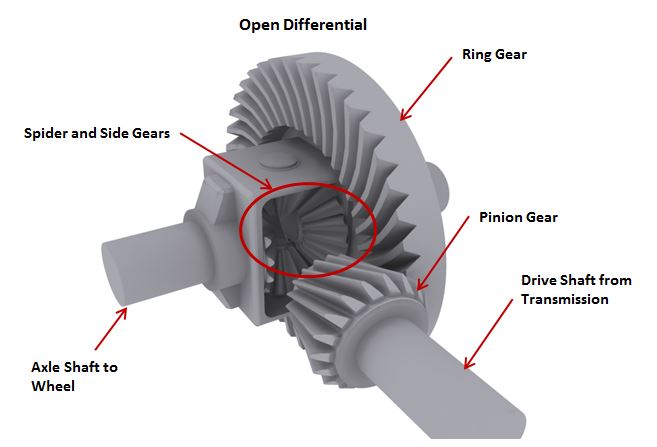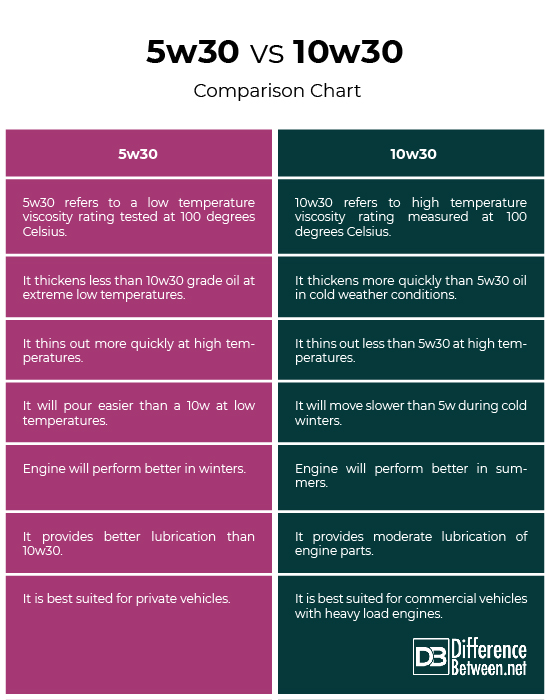Gear oil and gear lube are terms used interchangeably; gear oil is thinner and designed for manual transmissions, while gear lube is thicker and used in differentials. Gear oil has a lower viscosity to ensure smooth gear shifting in transmissions, while gear lube is thicker to provide better lubrication and protection for gears in differentials, which experience heavier loads and higher temperatures.
Both products serve the purpose of reducing friction and wear within the gear system, but their specific formulations cater to the unique demands of transmissions and differentials, respectively. Understanding the differences between gear oil and gear lube is essential for maintaining optimal performance and longevity of your vehicle’s drivetrain components.
Introduction To Gear Oil And Gear Lube
Gear oil and gear lube are terms that are often used interchangeably, but they actually refer to different types of lubricants. Gear oil is a heavier, more viscous lubricant used in manual transmissions, while gear lube is a thinner, more fluid lubricant used in differentials.
The main difference between the two is their viscosity and the type of gears they are designed to lubricate.
Brief History Of Gear Lubrication
Gear lubrication has a rich history that dates back centuries. In the early days, gears were primarily lubricated using animal fats, vegetable oils, or even fish oils. These lubricants provided minimal protection and were prone to degradation over time. However, with the advancements in technology and the understanding of lubrication science, specialized gear oils and gear lubes were developed to ensure optimum performance and longevity of gears.
Common Applications In Machinery
Gear oil and gear lube find extensive use in various machinery applications. These lubricants are specially formulated to provide superior protection and minimize wear and tear in gear systems. Some common applications include:
- Automotive transmissions: Gear oil is used to lubricate the gears in automotive transmissions, ensuring smooth gear shifting and preventing damage due to friction and heat.
- Industrial gearboxes: Gear lube is commonly used in industrial gearboxes found in manufacturing plants, power plants, and other heavy-duty machinery. It helps reduce friction and heat, thereby extending the lifespan of gears.
- Agricultural equipment: Gear oil is essential for lubricating gears in agricultural machinery such as tractors, combines, and harvesters. It protects against wear and tear caused by the demanding conditions of farm operations.
- Marine applications: Gear oil and gear lube are crucial for marine gear systems, including boat engines, outboard motors, and sailboat winches. They provide corrosion protection and ensure smooth operation even in saltwater environments.
These are just a few examples of the widespread use of gear oil and gear lube in machinery. The specific requirements and viscosity ratings may vary depending on the application, but the primary goal remains the same – to provide effective lubrication and prevent premature failure of gears.
Basic Properties Of Gear Oil
Gear oil and gear lube are both used to lubricate gears, but they have some key differences. Gear oil is designed for high-speed, high-load applications, while gear lube is formulated for slower-speed, lower-load applications. Gear oil has a higher viscosity and contains additives to enhance its performance under extreme conditions, while gear lube is thinner and offers better flow at lower temperatures.
Basic Properties of Gear Oil Gear oil and gear lube are both essential for lubricating and protecting gears in various machinery and vehicles. Understanding their basic properties, such as viscosity and additives, is crucial for selecting the right lubricant for specific applications.Viscosity And Its Importance
Viscosity, the measure of a fluid’s resistance to flow, is a critical factor in gear oil selection. Higher viscosity oils provide better lubrication under high-temperature and heavy-load conditions, while lower viscosity oils offer improved flow at lower temperatures, promoting easier startups and reducing energy consumption.Additives And Their Functions
Gear oils contain various additives to enhance their performance and longevity. Anti-wear additives, such as zinc dialkyldithiophosphate (ZDDP), form a protective layer on gear surfaces, reducing friction and wear. Extreme pressure additives help prevent metal-to-metal contact under high loads, ensuring gear protection even in harsh operating conditions. Understanding these basic properties empowers equipment operators and maintenance professionals to make informed decisions when selecting gear oil or gear lube for their specific applications.Basic Properties Of Gear Lube
Composition And Consistency
Gear lube is a specialized lubricant designed for use in differentials, manual transmissions, and transfer cases. It is typically composed of base oils and various additives that enhance its lubricating properties and protect the gears from wear and tear. The consistency of gear lube is thicker than that of gear oil, providing better film strength and adhesion to the gears, especially under high pressure and load conditions.
Temperature Resistance
Gear lube exhibits superior temperature resistance, remaining stable and effective in extreme operating conditions. It can withstand both high and low temperatures without losing its lubricating properties, ensuring smooth gear operation and preventing damage due to extreme heat or cold. This makes gear lube suitable for a wide range of applications, from heavy-duty industrial machinery to automotive gear systems.

Credit: blog.amsoil.com
Comparing Performance Factors
Gear oil and gear lube differ in viscosity and purpose. Gear oil is thicker, providing better lubrication for heavy-duty applications, while gear lube is thinner and better suited for lower torque operations. Understanding these distinctions is crucial for optimizing equipment performance.
When it comes to the difference between gear oil and gear lube, one of the most significant factors to consider is their performance. Gear oil and gear lube are designed to work under different conditions, which means their performance factors can vary. In this article, we will compare the load-carrying capacity and wear protection of gear oil and gear lube.Load-carrying Capacity
Load-carrying capacity is the ability of a lubricant to withstand pressure and prevent metal-to-metal contact under heavy loads. Gear oil is commonly used in heavy-duty applications due to its high load-carrying capacity. It contains additives such as sulfur and phosphorus that react with the metal surfaces to form a protective layer, preventing wear and tear. Gear lube, on the other hand, has a lower load-carrying capacity and is typically used in light-duty applications.Wear Protection
Wear protection is the ability of a lubricant to reduce friction and protect metal surfaces from wear. Gear oil and gear lube contain different additives that provide wear protection. Gear oil contains extreme pressure additives that form a protective layer on metal surfaces, preventing wear and tear. Gear lube, on the other hand, contains friction modifiers that reduce friction and wear. It is commonly used in applications where wear and tear are not severe. In conclusion, understanding the difference between gear oil and gear lube is important for selecting the right lubricant for your application. Gear oil is suitable for heavy-duty applications that require high load-carrying capacity and wear protection, while gear lube is suitable for light-duty applications that require lower load-carrying capacity and wear protection.Impact Of Temperature On Gear Oil And Lube
Understanding the impact of temperature on gear oil and lube is crucial for optimal performance. Differentiating between gear oil and gear lube is essential.
Thermal Stability
Gear oil offers superior thermal stability compared to gear lube. It can withstand high temperatures without degrading. This prevents damage to the gears.
Cold Flow Properties
Gear lube has better cold flow properties than gear oil. It remains effective in low temperatures, ensuring smooth gear operation in winter.
Gear Oil Vs Gear Lube In Different Environments
When it comes to lubricating gears, choosing the right product is essential for optimum performance and longevity. Two common options are gear oil and gear lube, each with its own unique characteristics and applications. Understanding the differences between these two can help you make an informed decision for your specific needs. Let’s explore the variations in industrial settings and automotive uses.
Industrial Settings
In industrial settings, gears often operate under heavy loads and high temperatures. This requires a lubricant that can withstand extreme conditions and provide long-lasting protection. Gear oil, with its high viscosity and resistance to thermal breakdown, is the preferred choice in such environments. The thick consistency of gear oil allows it to adhere to gear surfaces, minimizing friction and wear. It also helps to dissipate heat, preventing damage to the gears. Additionally, gear oil is formulated with additives that offer enhanced performance, such as anti-wear properties and corrosion resistance.
Automotive Uses
Automotive gears, on the other hand, operate under different conditions compared to their industrial counterparts. Vehicles experience a wide range of speeds and temperatures, requiring a lubricant that can adapt to varying demands. Gear lube, or transmission fluid, is specifically designed for automotive gearboxes. It has a lower viscosity compared to gear oil, allowing it to flow more easily through the intricate gear mechanisms. This enables smoother gear shifts and reduced friction, enhancing overall performance. Gear lube also contains additives that provide protection against oxidation, foaming, and wear.
Moreover, gear lube is available in different formulations, such as synthetic, semi-synthetic, and conventional, catering to various vehicle types and driving conditions. It is crucial to consult your vehicle manufacturer’s recommendations to determine the appropriate gear lube for your specific application.
In conclusion, while both gear oil and gear lube serve the purpose of lubricating gears, their compositions and characteristics make them suitable for different environments. Industrial settings typically require the high viscosity and heat resistance of gear oil, while automotive applications benefit from the lower viscosity and tailored additives of gear lube. Choosing the right lubricant can significantly impact the performance, efficiency, and lifespan of your gears, so it is important to consider the specific demands of your equipment or vehicle.
Maintenance And Longevity
Gear oil and gear lube are two lubricants used to maintain and prolong the lifespan of gears. The main difference between the two is their viscosity, with gear lube being thicker and more suitable for heavy-duty applications, while gear oil is thinner and better suited for automotive use.
When it comes to maintaining your vehicle’s gears, it is essential to understand the difference between gear oil and gear lube. Gear oil is typically used in manual transmissions and differentials, while gear lube is used in automatic transmissions. In terms of maintenance and longevity, there are some significant differences between the two.Change Intervals
One of the most critical factors in maintaining your vehicle’s gears is changing the oil or lube regularly. The frequency of oil changes can vary depending on the type of gear and the manufacturer’s recommendations. For gear oil, the change interval is typically around 30,000 miles or every two years, whichever comes first. On the other hand, gear lube needs to be changed more frequently, around every 15,000 miles or once a year.Impact On Gear Life
The type of oil or lube used in your vehicle’s gears can have a significant impact on its lifespan. Gear oil is thicker and more viscous, providing better protection against wear and tear. It is also better at handling high temperatures and pressure. Gear lube, on the other hand, is thinner and more fluid, making it easier to flow through the automatic transmission. However, it is not as effective at protecting the gears against wear and tear. In conclusion, understanding the difference between gear oil and gear lube is crucial for maintaining your vehicle’s gears. The change intervals and the impact on gear life are two critical factors to consider when choosing the right oil or lube for your vehicle. Regular maintenance and using the right type of oil or lube can help ensure your gears last longer and perform better.
Credit: www.machinerylubrication.com
Choosing The Right Product For Your Gear System
When selecting between gear oil and gear lube, it’s crucial to consider the specific needs of your gear system. The choice you make can significantly impact the performance and longevity of your equipment.
Compatibility With Materials
Gear oil is ideal for metal-on-metal contact, while gear lube is better suited for applications with bronze or brass components.
Manufacturer Recommendations
- Follow manufacturer recommendations for the type of lubricant to use in your gear system.
- Using the wrong product can lead to premature wear and damage to your equipment.
Environmental Considerations And Disposal
Gear oil and gear lube are commonly used for lubricating differentials and manual transmissions. The main difference lies in their viscosity and intended applications. Gear oil is thicker and used in heavy-duty applications, while gear lube is thinner and suitable for lighter loads.
It’s important to consider environmental impacts when disposing of these lubricants.
Eco-friendly Options
When choosing gear lubricants, opt for environmentally friendly options to minimize ecological impact.
Look for products labeled as biodegradable and non-toxic to reduce harm to ecosystems.
Proper Disposal Methods
Dispose of used gear oil and gear lube responsibly to prevent environmental pollution.
Recycle metal containers and bottles from gear lubricants to reduce waste in landfills.

Credit: www.youtube.com
Conclusion
Understanding the difference between gear oil and gear lube is crucial for maintaining the performance and longevity of your machinery. By choosing the right lubricant for your specific application, you can ensure optimal gear protection and smooth operation. Make an informed decision based on the unique requirements of your equipment.


